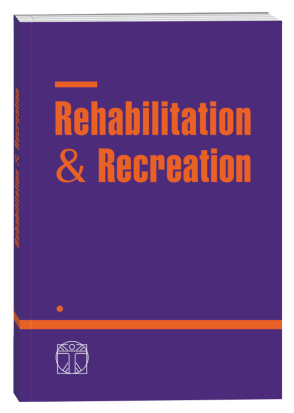DZIECI Z CUKRZYCĄ TYPU 1, A LEKCJE WYCHOWANIA FIZYCZNEGO W PLACÓWKACH OŚWIATOWYCH
DOI:
https://doi.org/10.32782/2522-1795.2023.15.28Ключові слова:
cukrzyca typu 1 u dzieci, zajęcia wychowania fizycznego, ćwiczenia fizyczne.Анотація
W Polsce na cukrzycę typu 1 choruje około 20 000 dzieci. Największa zachorowalność przypada na okres wieku szkolnego i przedszkolnego. Wiedza na temat choroby wśród dorosłej populacji jest bardzo niska. Brak informacji i wiedzy dotyczącej postępowania z chorym dzieckiem prowadzi często do lęku i niechęci do opieki. Zgodnie z rekomendacją PTD (Polskiego Towarzystwa Diabetologicznego) cukrzyca nie jest wskazaniem do indywidualnego toku nauczania i zwolnienia z jakichkolwiek zajęć np. wychowania fizycznego czy wycieczek. Aby zapobiegać stygmatyzacji chorego dziecka, a przede wszystkim zapewnić mu bezpieczeństwo w szkole, pracownicy każdej placówki oświatowej, do której uczęszcza chory uczeń powinni odbyć stosowne, obowiązkowe przeszkolenia. W Polsce w latach 2014–2020 Ministerstwo Zdrowia zorganizowało szkolenia obejmujące informacje o cukrzycy wraz z zasadami pierwszej pomocy dla chorego dziecka. Kursy skierowane były do wszystkich pracowników szkół podstawowych i przedszkoli. Wzięło w nich udział ogółem 11634 pracowników z 8073 placówek – łącznie przedszkoli i szkół podstawowych. W roku 2020 w Polsce funkcjonowało 13,2 tys. publicznych przedszkoli i 14,2 tys. publicznych szkół podstawowych, co daje sumę 27,4 tys. placówek. Zatem tylko pracownicy 1/3 placówek oświatowych odbyli kurs. Za nieodłączny i integralny element leczenia cukrzycy uznawana jest aktywność fizyczna. Dzieci z dobrze kontrolowaną cukrzycą mogą wykonywać bardzo intensywną aktywność fizyczną, nie tylko rekreacyjną ale również na poziomie zawodowym. Zarówno na świecie jak i w Polsce wielu wybitnych sportowców zmaga się z cukrzycą typu 1. Choroba nie przeszkadza w zdobywaniu medali, nawet na szczeblu olimpijskim. Cukrzyca nie powinna być postrzegana jako ograniczenie w udziale w sportowych zajęciach szkolnych. Warunkiem koniecznym do aktywności sportowej jest znajomość zasad postępowania w cukrzycy i samokontrola związana z chorobą. Niezbędna jest umiejętność równoważenia wysiłku fizycznego z przyjmowaniem insuliny i odpowiednią dietą. W związku ze stałym wzrostem zachorowań na cukrzycę typu 1 wśród polskich dzieci, potrzebne są zmiany w programie dydaktycznym prowadzonym przez uczelnie wyższe, w których kształcą się przyszli nauczyciele wychowania fizycznego.
Посилання
Bohn B., Herbst A., Pfeifer M. i in. (2015). Wpływ aktywności fizycznej na kontrolę glikemii i występowanie czynników ryzyka sercowo-naczyniowego u dorosłych z cukrzycą typu 1: przekrojowe wieloośrodkowe badanie z udziałem 18 028 pacjentów. Opieka nad cukrzycą. 78-79. 2. Cuenca-García M., Jago R., Shield J.P., Burren C.P. (2012). Jak aktywność fizyczna i sprawność fizyczna wpływają na kontrolę glikemii u młodych osób z cukrzycą typu 1? Cukrzyca Med. 97.
Grygus I., Nesterchuk N., Skalski D., Zabolotna O. (2021). Edukacja w polskim społeczeństwie nowoczesnym a edukacja zdrowotna. Kultura fizyczna, edukacja zdrowotna i bezpieczeństwo. Gdańsk, 81-97.
Kashuba V., Andrieieva O., Yarmak O., Grygus O., Napierala M., Smolenska O., Ostrowska M., Hagner-Derengowska M., Muszkieta R., Zukow W. (2021). Morpho-functional screening of primary school students during the course of physical education. Journal of Physical Education and Sport. 21(2):748-756.
Konturek S. (2019). Fizjologia człowieka. Podręcznik dla studentów medycyny. Edra Urban& Partner. 57.
Martyn-Nemeth P., Schwarz Farabi S., Mihailescu D. et al. (2016). Lęk przed hipoglikemią u dorosłych z cukrzycą typu 1: wpływ postępów terapeutycznych i strategii zapobiegania – przegląd. J Powikłania cukrzycy. 73.
Momot O., Diachenko-Bohun M., Hrytsai N., Grygus I., Stankiewicz B., Skaliy A., Hagner-Derengowska M., Napierala M., Muszkieta R., Ostrowska M., Zukow W. (2020). Creation of a Healthcare Environment at a Higher Educational Institution. Journal of Physical Education and Sport, Vol 20 (Supplement issue 2), 975–981.
Mutlu E.K., Mutlu C., Taskiran H., Ozgen I.T. (2015). Związek poziomu aktywności fizycznej z depresją, lękiem i jakością życia u dzieci z cukrzycą typu 1. J Pediatr Endocrinol Metab. 56.
Skalski D., Kowalski D., Grygus I., Nesterchuk N. (2020). Physical culture in a rural environment and health education. Rehabilitation & recreation. 6. 76-88. http://doi.org/10.5281/ zenodo.4033295
Skalski D., Kowalski D., Grygus I., Zabolotna O. (2021). Rola rodziny i państwa w wyrównywaniu szans życiowych dzieci pochodzących z różnych środowisk społecznych a edukacja zdrowotna. Zarzadzanie kultura fizyczna zdrowiem i bezpieczeństwem. Starogard Gdański.
Skalski D.W., Grygus I., Skalska E., Rybak L. (2022). Współczesna kultura fizyczna a styl życia. Spektrum peregrynacji po kulturze fizycznej dla mistrzów wychowania fizycznego: Scientific monograph. Praca zbiorowa pod redakcją Białasa M. i Skalskiego D.W. Gdańsk. 21-34.
World Health Organization: Physical activity strategy for the WHO European Region 2016-2025. World Health Organization, 2016.
##submission.downloads##
Опубліковано
Як цитувати
Номер
Розділ
Ліцензія

Ця робота ліцензується відповідно до Creative Commons Attribution-NonCommercial-NoDerivatives 4.0 International License.











